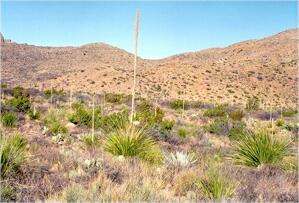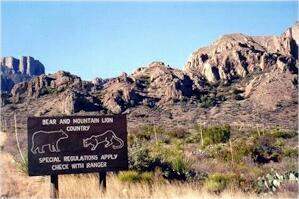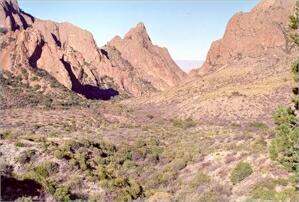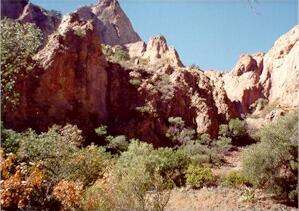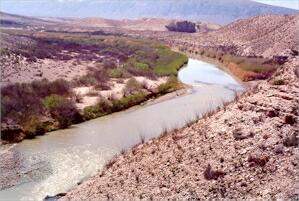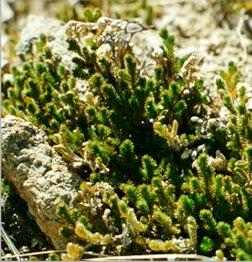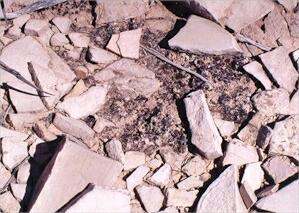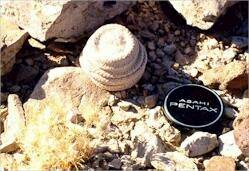CHIHUAHUAN DESERT The Chihuahuan Desert extends over a large area of northern Mexico and projects into the southern part of the USA, including west Texas (for example, the Big Bend National Park) and parts of New Mexico and Arizona. The characteristic landscape, vegetation and animal life of this region is largely determined by a few basic factors.
The relatively high rainfall and cool winter temperatures result in a vegetation often dominated by grasses and frost-tolerant plants such as agaves and yuccas. There are no large columnar cacti, except in the more southerly regions of Mexico, but there are many small and interesting cacti that prefer lime-rich environments. This page describes the main features of the Chihuahuan Desert, including the changes that occur with increasing elevation. Other pages describe the unusual cacti and other characteristic plants of the Chihuahuan Desert. The major vegetation types The Chihuahuan Desert shows very clear changes of vegetation as we move from the lower lying regions to increasingly higher elevations. These transitions are dictated partly by changes in soil factors and partly by changes in temperature and rainfall. In the lower-lying, flatter areas the soils are typically sandy or gravelly, overlying a compacted layer of caliche. These soils retain little water and often are dominated by creosote bush, either growing alone or mixed with other drought-tolerant plants such as ocotillo, hedgehog cacti and a small yucca called lechuguilla (image 1 above). However, in some places, creosote bush can be co-dominant with tarbush, another drought-tolerant shrub that prefers calcareous soils. Both lechuguilla and tarbush are characteristic plants of the northern parts of the Chihuahuan Desert. Beyond the flatter regions, the land slopes gently upwards to form bajadas, where the debris from mountain erosion accumulates as a mixture of small rocks, stones and smaller soil particles. These soils are deeper and enable water to penetrate further into the soil profile because of their mixture of particle sizes, so that the less drought-tolerant plants predominate. On the bajadas, creosote bush is rapidly replaced by a community dominated by tree-like species of Yucca, such as Torrey yucca or banana yucca (image 2 above). These yuccas are difficult to distinguish from one another because of hybridisation, and frequently are grouped under the common name of Spanish daggers because of their sharply pointed leaves. They are drought-tolerant plants, with thick leaves and they are quite frost-tolerant. With ascending elevation the typical desert community is replaced by desert grassland, which often includes a conspicuous plant called sotol, or desert spoon (image 3 above). In some ways this plant resembles a yucca, but it does not have fleshy leaves and its flower structure is quite different. As we move even higher into the mountain canyons, the desert grassland is replaced by desert scrub, including bushes and small trees such as shrub live oak, mormon tea and jojoba (image 4). These plants grow in the deep alluvial fans created during hundreds of thousands of years of mountain erosion (image 5) and in the shelter of the mountain crags (image 6) where the temperature is cooler and water is more abundant than in the valley floors. Finally, in the highest regions the scrub zone is replaced by a true tree zone, including pines (e.g. Pinyon pine), oaks and tree-sized junipers (e.g. Alligator juniper). However, such differences on a grand scale do not give a complete picture, because there are many subtle variations in the plant communities. For example, a narrow zone of reeds and willow trees lines the Rio Grande (image 7, below) but immediately beyond this is an extremely arid zone where many unusual plants grow on the shallow soils of a limestone pavement. These plants include Hechtia (also known as false agave - a member of the pineapple family), limber bush (image 9), resurrection fern (image 10) and candelilla, from which wax has traditionally been extracted for making candles. Where the soil is exposed within the limestone pavement there is a complex microbial crust (image 11) - a vital community of lichens, fungi and cyanobacteria that, over tens, hundreds and thousands of years, contribute to the soil-forming process. Some of the extremely dry limestone ridges (image 8) support an unusual range of cacti found nowhere else, such as the living rock cactus and Bokes button cactus (image 12). Go
to Chihuahuan Desert Cacti? |

